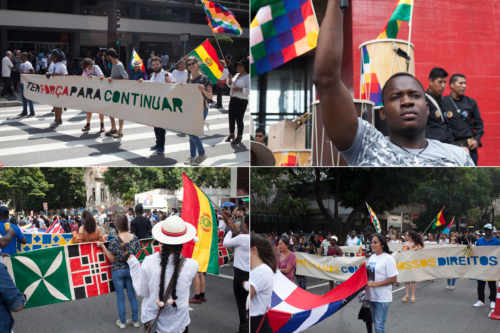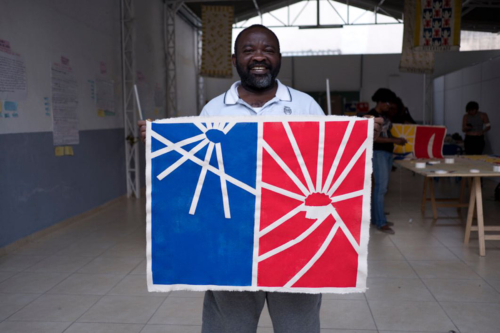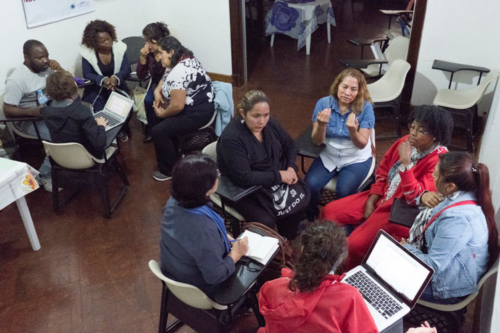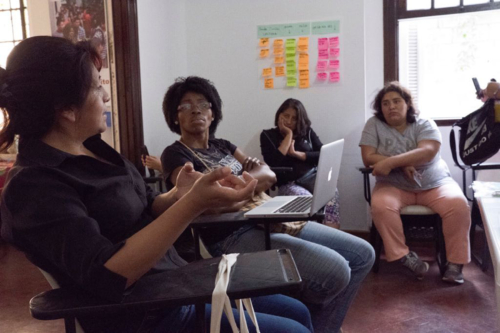FRONTEIRA LIVRE foi uma intervenção para a 11ª Bienal de Arquitetura de São Paulo. Consistiu em bandeiras/fronteiras inseridas na comunicação visual do Metrô de São Paulo e CPTM no período de outubro a dezembro de 2017. As bandeiras estão nas principais estações da linha vermelha: Barra-Funda, República, Sé, Brás, Tatuapé e Itaquera. Esta é a linha mais movimentada, de um sistema que transporta 4,7 milhões de passageiros por dia.
O projeto foi desenvolvido através de uma estreita colaboração entre CAMI Centro de Apoio e Pastoral do Imigrante, Goma Oficina Plataforma Colaborativa e Eriksson Furunes. Em parceria com Lucy Bullivant, Metro de São Paulo, CPTM e DAFAM Diretório Acadêmico da FAU-Mackenzie.
Através de uma história, cada um compartilhou sua experiência pessoal com fronteiras. A partir dessa troca, foi contruido pelo grupo narrativas coletivas, através de seis principais mensagens. As mensagens estão sendo comunicadas através de frases e padrões geométricos. As bandeiras abordam um tópico relevante de hoje: a imigração. Tendo atravessado uma fronteira nacional, os imigrantes enfrentam uma série de fronteiras invisíveis, sejam elas culturais, sociais ou econômicas.
O processo foi possível graças ao apoio financeiro do Ministério Norueguês dos Negócios Estrangeiros / Design e Arquitetura Noruega (DOGA) e do Programa Norueguês de Pesquisa Artística.
Grupo: Albertina Afonso Glosser, Aracely Tatiana
Mérida Urena, Jose Mpela Bolayenge, Gredy, Claudine
Shindany Kumbi, Nataly Puente de la Vega Unda,
Tomasa Nancy Salva Guarachi, Nila Jackeline Salva
Guarachi, Soledad Requena e Carla Aguilar (CAMI) e
Christian Salmeron, Ana David, Vitor Pena, Guilherme
Tanaka e Lauro Rocha (Goma Oficina)
Coordenação: Maria Cau Levy, Gabriela Forjaz (Goma
Oficina) e Alexander Eriksson Furunes

OFICINA DE VÍDEO FRONTEIRA CRUZADA
Coordenação: Patrick, André Stefanini, Fernando
Banzi e Renata Miranda
Jennifer Xavier, Marina Bidoia Gerdullo, Gabriel
Araujo Fernandes , Beatriz Mateus Faustino Saporito,
Nayane alves de souza, Isabela Biscuola Pavão ,
Ana Clara Rodrigues Guerra, isabella previti, Beatriz
Oliveira Paiva, Igor Vicente Gomes da Silva, Matheus
Cano, Bruno Luiz Peixe
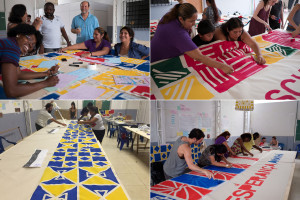

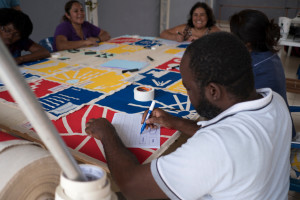
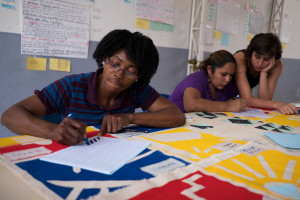
invisible borders (en)
Where in your life do you find a border, rather than a line that separates nations? What is our personal story of these borders and where do our own individual experience relate to our collective experience of borders? How can we collectively build a movement to address and move the borders of today? These were questions discussed during this past weeks workshop at Cami, center for Migrant Support with 8 migrants to Sao Paulo, Brazil from Bolivia, Peru, Angola, Haiti and Congo.
Project:
“Fronteira Livre” is a collaborative intervention for the 11th Architecture Bienale of São Paulo consisting of six banners for the São Paulo Metro and CPTM over the period of 16th October to 15th November 2017. The banners will be hung on the 6 mains stations of the red line on the São Paulo metro; Barra-Funda, República, Sé, Brás, Tatuapé and Itaquera. This is the busiest line, of a metro system carrying 4.7 milion passengers a day.
Process:
The process was carried out through collaboration with 8 members of CAMI Migrant Support Center. Through story telling each of the shared their personal experience of the borders they have been facing since arriving in Brazil. In this process identifying what are the collective stories they all share and what message they would like to communicate through the banners. Communicating this message through text and patterns each of the six banners. The banners address a relevant topic of today, migration. Having crossed a national border, migrants face a series of invisible borders, whether cultural, social or economic.
Team:
The project was developed through a close collaboration between Goma Oficina (Collaborative platform), Alexander Eriksson Furunes (Architect & research fellow Norwegian Artistic Research Programme) and CAMI Center for Migrant Support. In a close partnership with Lucy Bullivant (Curator and architecture critic), São Paulo Metro, CPTM andDAFAM FAU-Mackenzie School of Architecture.
The process to design these banners were made possible through the financial support of The Norwegian Ministry of Foreign Affairs / Design and Architecture Norway (DOGA)[1] and the Norwegian Artistic Research Programme, of which Alexander Eriksson Furunes is currently doing his research on collaborative design processes.
